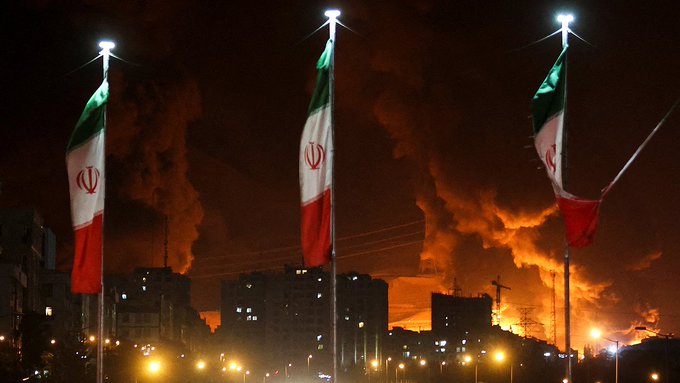The already volatile Middle East was rocked anew as Israel launched a major airstrike on Iran’s Isfahan nuclear facility marking a dramatic escalation in the ongoing conflict between the two regional powers. The attack, which reportedly involved around 50 Israeli fighter jets, targeted critical centrifuge production sites at the heart of Iran’s nuclear research infrastructure. While Iranian officials confirmed damage to the facility, they asserted that there was no hazardous material leakage or human casualties—a claim corroborated by international nuclear watchdogs.
The Strike and Its Immediate Impact
In the early hours of Saturday, smoke was seen billowing from the vicinity of a mountain near Isfahan, following two waves of Israeli airstrikes. The International Atomic Energy Agency (IAEA) later confirmed that a centrifuge workshop at the site had been damaged, but emphasized that no nuclear material was present, thus ruling out any immediate radiological threat. This attack represents the second Israeli strike on Isfahan since hostilities flared up just over a week ago, underscoring Israel’s determination to cripple Iran’s nuclear capabilities.
The Israeli military described the operation as part of a broader campaign to destroy Iran’s nuclear program, specifically targeting facilities involved in uranium enrichment. According to Israeli officials, these strikes have significantly set back Iran’s ability to manufacture advanced centrifuges, which are essential for enriching uranium to weapons-grade levels.
Escalating Tit-for-Tat Attacks
The Isfahan strike was just one episode in a rapidly intensifying cycle of violence. In retaliation, Iran launched a barrage of missiles and drones at Israeli cities, including Tel Aviv, where explosions and fires were reported as air defense systems intercepted incoming projectiles. While most of Iran’s attacks were thwarted, some drones managed to penetrate Israeli defenses, causing property damage but, according to initial reports, few casualties.
The human toll of the conflict is mounting. Iranian health authorities reported at least 430 fatalities and nearly 3,500 injuries in Iran since the conflict began, while Israeli sources cited 24 civilian deaths from Iranian missile strikes. The violence has also claimed the lives of several senior Iranian commanders, including Saeed Izadi, a key figure in Iran’s Islamic Revolutionary Guards Corps, whom Israel accused of supporting Palestinian militant groups.
Diplomatic Deadlock in Geneva
Amid the spiraling violence, diplomatic efforts to de-escalate the crisis have so far failed. On Friday, European foreign ministers met with Iran’s chief diplomat in Geneva, hoping to broker a ceasefire and revive nuclear negotiations. However, Iran’s Foreign Minister Abbas Araghchi categorically ruled out any talks on its nuclear program while under attack, insisting that negotiations could only resume once Israeli aggression ceased.
European leaders expressed cautious optimism about future dialogue, but no concrete progress was made. U.S. President Donald Trump, meanwhile, dismissed the European initiative and indicated he would decide within two weeks whether to join Israel’s military campaign against Iran. Iran, for its part, warned that any U.S. military intervention would be met with severe consequences.
Strategic and Regional Implications
Israel’s strikes on Iran’s nuclear infrastructure are rooted in deep-seated fears that Tehran is on the verge of acquiring nuclear weapons—a charge Iran denies, maintaining that its nuclear activities are for peaceful purposes. The Israeli government, however, has vowed to continue its campaign until it is certain that Iran’s nuclear ambitions are permanently thwarted, even as military officials warn of a “prolonged campaign”.
The risk of further escalation remains high. Both sides have demonstrated the capability and willingness to inflict significant damage, and the absence of diplomatic progress raises the specter of a broader regional conflict. With the United States deliberating its next move and European powers unable to mediate a ceasefire, the crisis appears poised to continue, with potentially grave consequences for regional and global security.
Conclusion
The latest Israeli strike on Iran’s Isfahan nuclear facility represents a dangerous new phase in the Israel-Iran conflict. As both nations exchange attacks and diplomacy stalls, the world watches anxiously, aware that the stakes—nuclear proliferation, regional stability, and the lives of thousands—could not be higher.

